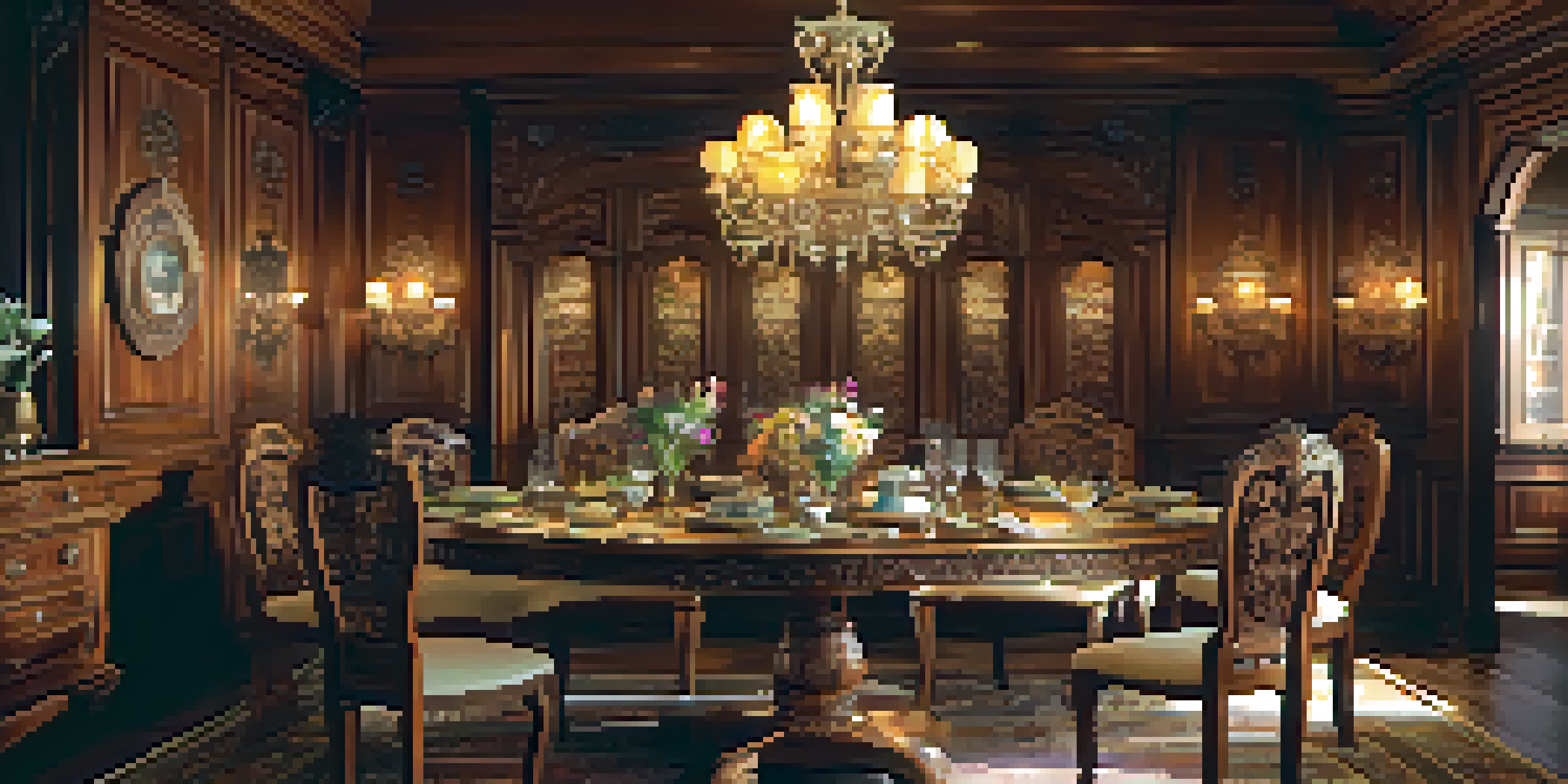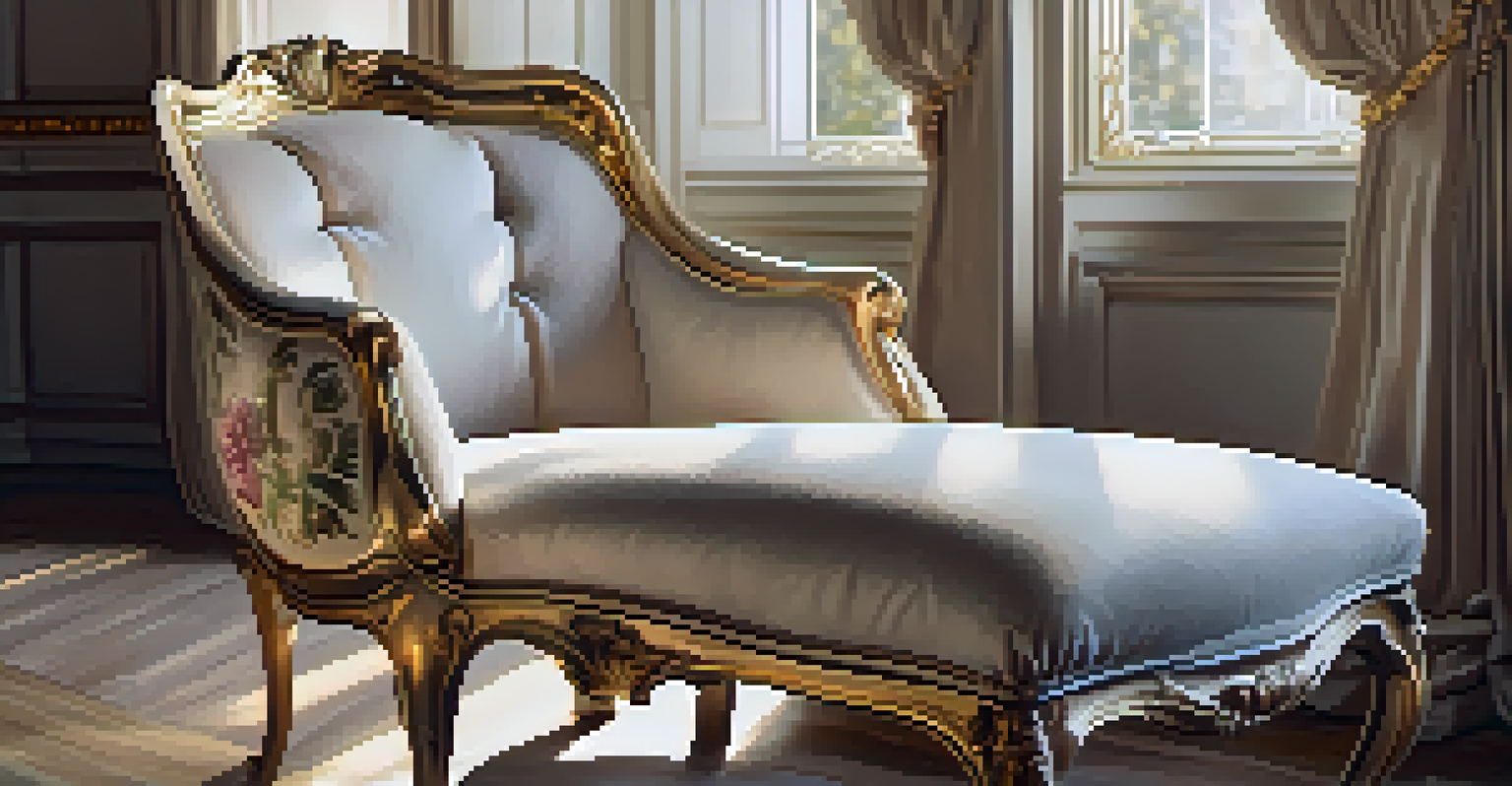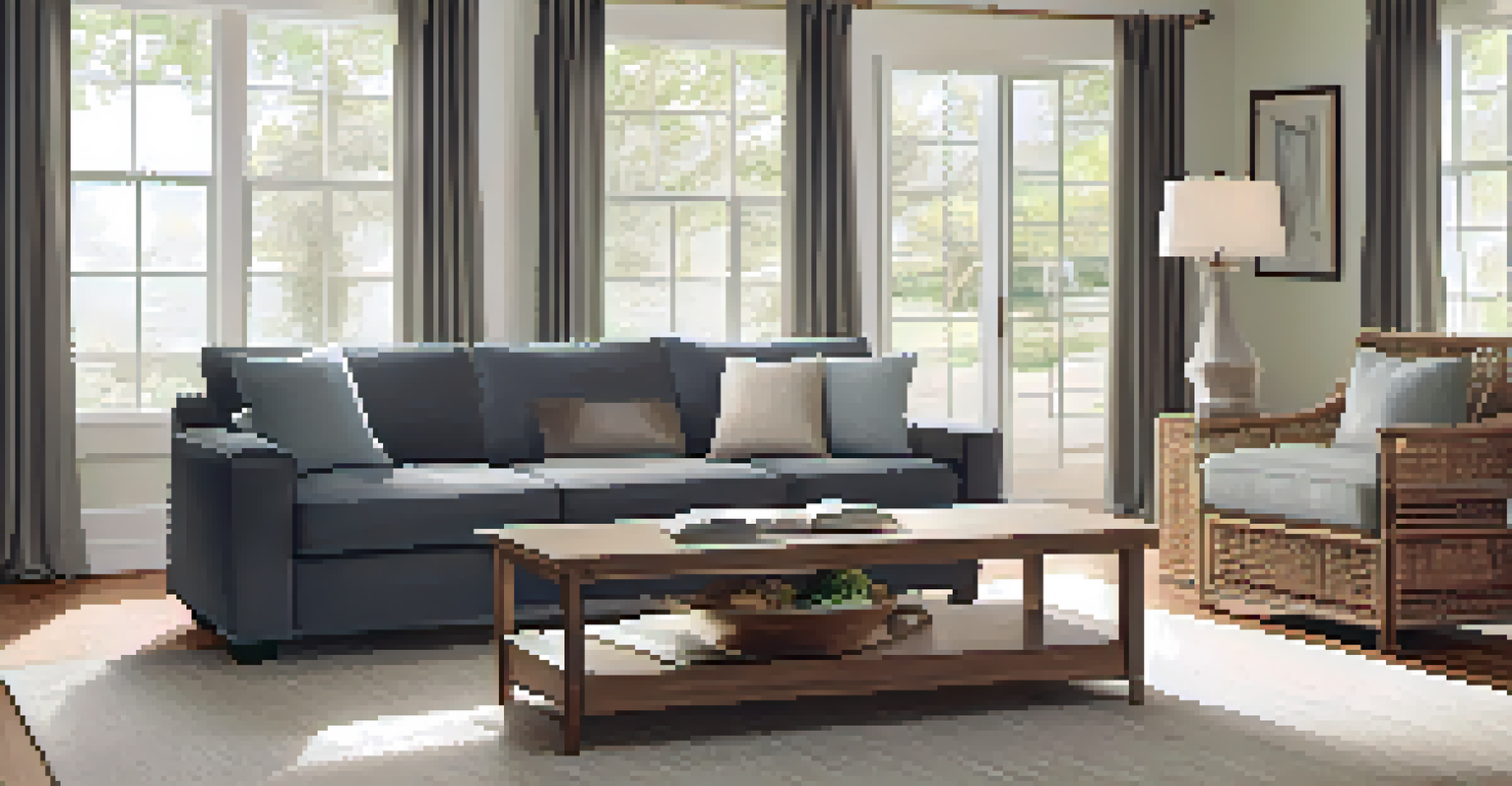Choosing the Right Carving Style for Your Antique Furniture

Understanding the Importance of Carving Styles
Carving styles can dramatically influence the aesthetic and value of antique furniture. They reflect the craftsmanship of the period and often tell a story about the culture and tastes of that time. Choosing the right style is essential not only for preserving the piece but also for enhancing its beauty.
Antique furniture is not just about aesthetics; it's about preserving history and ensuring that these pieces remain treasured for generations.
For instance, a Victorian-era piece may feature intricate floral motifs, while a Federal style might showcase more geometric patterns. Recognizing these differences helps in making an informed decision. By understanding the historical significance, you can appreciate the artistry involved in the craftsmanship.
Ultimately, the right carving style connects you to the past, allowing you to honor the original artisans. It's not just about aesthetics; it's about preserving history and ensuring that these pieces remain treasured for generations.
Exploring Different Carving Styles
There are various carving styles to consider, each with its unique flair. From the delicate details of Rococo to the bold features of Arts and Crafts, each style offers something distinct. Understanding these styles will help you appreciate their nuances when selecting for your antique furniture.

For instance, if you lean towards romantic, flowing designs, Rococo might be your go-to. On the other hand, if you prefer simplicity and functionality, you may find yourself drawn to Shaker-style furniture. Each choice reflects personal taste and can influence the overall ambiance of your space.
Carving Styles Reflect History
Understanding carving styles enhances appreciation for antique furniture and its cultural significance.
Additionally, certain styles may also resonate more with specific furniture types—like intricate carvings on chairs versus simpler designs on tables. This awareness can help guide your selection process based on the furniture pieces you own or wish to acquire.
Matching Carving Styles with Furniture Types
Not all carving styles suit every type of furniture, so it's important to match them wisely. For instance, an ornate carving may enhance the elegance of a dining table, while a plain, minimalist design might be better suited for a modern coffee table. This synergy between style and function is key.
Good design is timeless. It transcends trends and speaks to the quality of craftsmanship that endures.
Think about where the furniture will be used. A heavily carved armchair might look stunning in a formal living room, but it may feel out of place in a casual family space. Balancing aesthetics with practicality ensures that your furniture is not only beautiful but also functional.
Furthermore, the scale of the furniture also plays a role. Large pieces can handle more intricate carvings, while smaller items might benefit from simpler designs. This consideration can help create a cohesive look throughout your home.
Considering Your Personal Style and Preferences
Your personal style is a crucial factor when choosing a carving style. Are you drawn to the opulence of Baroque, or do you prefer the understated elegance of Scandinavian design? Understanding your taste can guide you in selecting pieces that resonate with you.
Take some time to explore different styles and see what catches your eye. Create a mood board with images of furniture styles that appeal to you. This visual representation can serve as a great reference point when you start looking for antique pieces.
Match Styles to Furniture Types
Choosing the right carving style for specific furniture types ensures a balance between aesthetics and functionality.
Remember, your home should reflect who you are. Choosing a carving style that aligns with your aesthetic will not only enhance your space but also create a comforting environment that feels uniquely yours.
Understanding the Craftsmanship Behind Carving
The craftsmanship involved in antique furniture carving is a testament to the skill and dedication of artisans. Each piece of carved detail was often meticulously crafted by hand, requiring immense talent and patience. Appreciating this craftsmanship adds depth to your understanding of antique furniture.
When examining a piece, consider the techniques used in its creation. For example, relief carving involves sculpting a design that stands out from the background, while inlay work incorporates different materials for added texture. Recognizing these methods can enhance your appreciation for the artistry behind the furniture.
Furthermore, understanding craftsmanship can also inform your choices when purchasing or restoring antique pieces. It allows you to assess the quality and authenticity, ensuring you invest in furniture that truly reflects its historical value.
Evaluating the Condition of Carved Furniture
Before making a decision, it’s essential to evaluate the condition of the carved furniture. Look for signs of wear and tear, such as cracks, chips, or fading. These imperfections can affect both the aesthetic and the value of the piece, so a thorough examination is crucial.
Additionally, consider how the condition of the carving aligns with your expectations. Some buyers prefer pieces that show their age, while others may seek pristine, restored items. Knowing your preference can help you make a more confident choice.
Seek Expert Advice for Antiques
Consulting professionals can provide valuable insights and help authenticate antique furniture pieces.
If you’re looking at a piece that needs restoration, it's wise to consult with a professional. They can provide insight into whether the restoration will maintain the integrity of the carving and the overall piece.
Seeking Professional Advice for Your Selection
When in doubt, seeking professional advice can be invaluable in your decision-making process. Antique dealers, restorers, or appraisers can offer insights into the best carving styles for your furniture. Their expertise can help you navigate the nuances of various styles and ensure you make informed choices.
Furthermore, professionals can assist in identifying the authenticity of a piece. In the world of antiques, this is paramount, as it directly affects both value and desirability. Understanding whether a piece is truly vintage or a reproduction can save you from costly mistakes.

Lastly, don’t hesitate to ask for recommendations or resources. Many professionals are happy to guide you towards reputable sources for purchasing or restoring antique furniture, helping you find exactly what you're looking for.